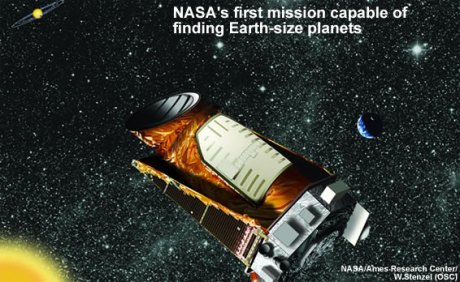Kepler: Mission: find extra solar earth-sized planets March 8, 2009
Posted by rationalskeptic in Astronomy.Tags: Earth-like planets, extrasolar planets, Satellite telescopes
trackback
Kepler is the most recent satellite telescope launched by NASA, and arguably the most thrilling astronomical instrument ever launched. Kepler was launched on March 6, 2009, and it’s sole purpose is to search for extrasolar earth sized planets. The telescope will be looking in the region of our galaxy near the Cygnus and Lyra constellations, and has the field of view to observe over 100,000 stars that are between 600 and 3,000 light years away.
Over the past decade astronomers have found over 300 extrasolar planets, but most of these are gas giants such as Jupiter, Saturn, Uranus, and Neptune. But recently these “planet hunters,” have discovered planets somewhat similar to earth, but the smallest planet found so far is double the size of the earth. Now, with the Kepler telescope specifically designed for finding earth-like planets, astronomers are optimistic about the discoveries that lie ahead.
It is very difficult to find planets similar to earth, since rocky planets that could sustain life are so much smaller than the gas giants. Astronomers have to look at a star to see if its gravity is being disturbed by some object, and the three methods used are:

Comments»
No comments yet — be the first.